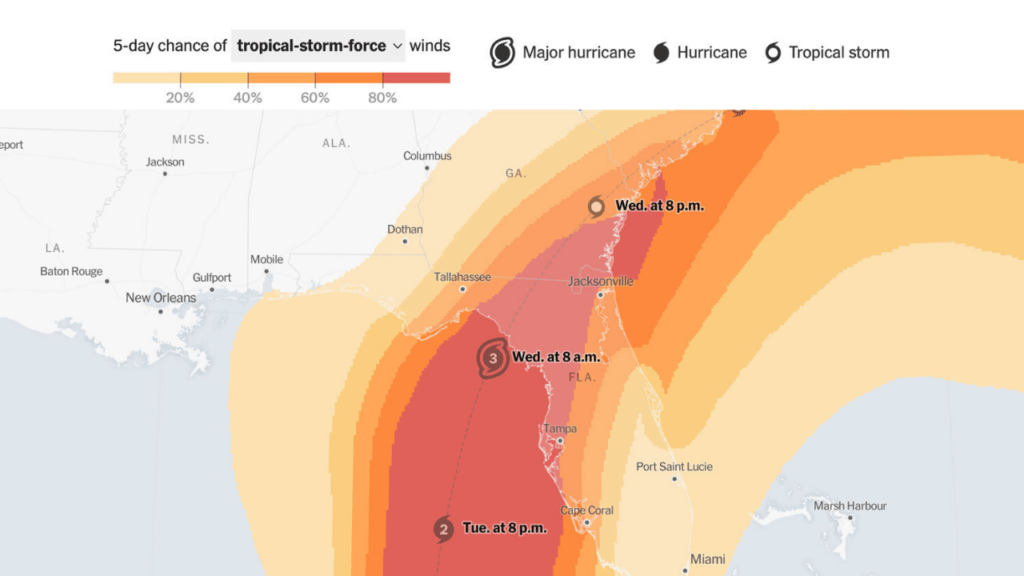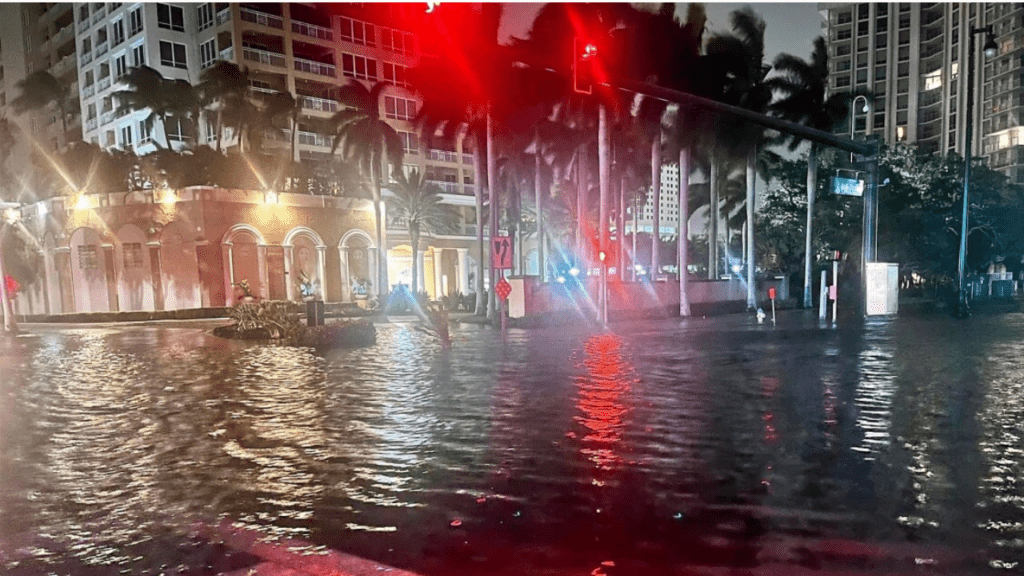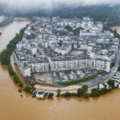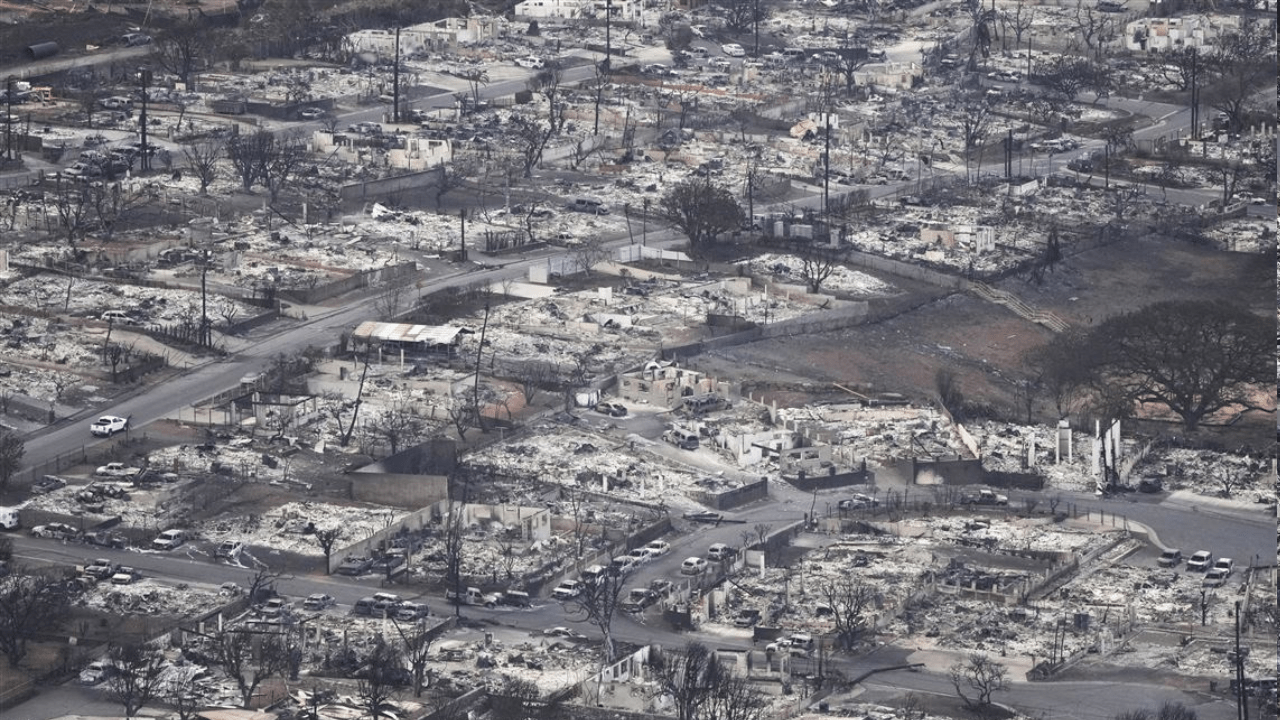‘Every hurricane is different’: Why experts are still estimating Idalia’s impact

Yes, that is a correct statement. Every hurricane is different, and it is difficult to predict exactly how a storm will behave. This is because hurricanes are affected by a number of factors, including their size, strength, and location. Idalia was a small, tightly wound storm, which made it difficult to predict its path and impact. Additionally, the storm weakened as it moved inland, which also made it difficult to estimate its intensity.
Experts are still estimating Idalia’s impact because they need more data to make accurate predictions. This data includes information about the storm’s size, strength, and location, as well as the conditions in the atmosphere and ocean.
Once experts have more data, they will be able to make more accurate predictions about Idalia’s impact. However, it is important to remember that every hurricane is different, and the actual impact of a storm may differ from the predictions.
Here are some of the factors that can affect the impact of a hurricane:

- Size: The larger the hurricane, the more destructive it can be.
- Strength: The stronger the hurricane, the higher the wind speeds and the greater the storm surge.
- Location: The location of a hurricane can also affect its impact. Hurricanes that make landfall along the coast are more likely to cause damage than those that stay offshore.
- Conditions in the atmosphere and ocean: The conditions in the atmosphere and ocean can also affect the impact of a hurricane. For example, a hurricane that is moving over warm water is more likely to be strong than a hurricane that is moving over cold water.
It is important to stay informed about the latest forecasts and warnings for any hurricane that is threatening your area. You can get this information from the National Hurricane Center website or by calling your local emergency management office.
Why experts are still estimating Idalia’s impact
As recently as Monday morning, before Idalia made landfall in Mexico, the U.S. National Hurricane Center was still estimating its potential impact. As of Tuesday morning, the hurricane had weakened to a tropical storm, but forecasters warned that it could still bring life-threatening flooding. Experts say that Idalia’s track is highly unusual, and that’s one of the reasons why they’re still trying to determine its potential impact. The storm is expected to interact with a cold front as it moves inland, which could cause it to intensify. That makes it hard to predict how much rain Idalia will ultimately bring.
Idalia is expected to bring high winds and rain to the Northeast Coast.
Hurricane Idalia is expected to bring high winds and rain to the Northeast Coast as it approaches the United States. This tropical storm has the potential to become a hurricane, and experts are urging people to be prepared. This system is forecast to bring dangerous wind, rain, and storm surge to the Northeast Coast beginning on Tuesday. Hurricane conditions are possible in portions of the Mid-Atlantic and Northeast on Wednesday and Thursday. The National Hurricane Center is urging people in the path of the storm to take action now to prepare for Hurricane Idalia. This includes stocking up on supplies, making a plan, and knowing your evacuation route. Now is the time to prepare for this potentially dangerous storm. Hurricane Idalia could bring high winds, heavy rain, and storm surge to the Northeast Coast. evacuating if necessary. make sure you have a plan and know your evacuation route.
Experts are still estimating the potential impact of Idalia.
The possibility of a hurricane hitting the Tampa Bay area is one of the most concerning aspects of the 2018 Atlantic hurricane season for residents. Even though forecasters have become much better at predicting where a hurricane will make landfall, there is still a great deal of uncertainty when it comes to estimating the potential impacts of a storm. This is especially true for Hurricane Idalia, which is currently forecast to make landfall in the Florida Panhandle on Wednesday evening. There are a number of factors that make it difficult to estimate the potential impacts of Hurricane Idalia. First, there is a significant amount of uncertainty in the forecast track of the storm. While the most recent forecast from the National Hurricane Center has Idalia making landfall in the Florida Panhandle, there is still a chance that the storm could veer further east and make landfall in the Big Bend region of Florida. This would have a very different set of impacts than if the storm makes landfall in the Panhandle. Second, it is difficult to know how strong the storm will be when it makes landfall. Idalia is currently a Category 2 hurricane, but it could weaken before it makes landfall. Alternatively, the storm could intensify and make landfall as a Category 3 or higher hurricane. The strength of the storm will have a significant impact on the potential damage and flooding. Finally, the timing of the storm is also uncertain. Idalia is currently forecast to make landfall on Wednesday evening, but the exact timing could change. If the storm makes landfall during the daytime on Wednesday, there could be less wind damage but more storm surge and flooding. Alternatively, if the storm makes landfall late at night or in the early morning hours on Thursday, there could be more wind damage but less flooding. All of these factors make it difficult for experts to estimate the potential impacts of Hurricane Idalia. Even though the forecast track, intensity, and timing of the storm are all important factors, there is still a great deal of uncertainty about what will happen. This is why it is so important for residents of the Tampa Bay area to continue to monitor the forecast and be prepared for the possibility of a hurricane hitting the area.
Idalia is expected to cause significant damage to infrastructure.
Idalia is expected to cause significant damage to infrastructure. This is because the hurricane is expected to bring strong winds and heavy rains. These conditions can damage homes, roads, and other structures. In addition, flooding can damage equipment and disrupt service. As a result, it is important for people to be prepared for the possibility of damage to infrastructure.
Idalia is expected to disrupt transportation.
As Idalia makes its way inland, experts are still trying to determine the full extent of its impact. One area that is expected to be affected is transportation. Idalia is currently a tropical storm, but it is expected to strengthen into ahurricane as it moves over the Gulf of Mexico. This could cause significant disruptions to transportation, especially in coastal areas. The storm is expected to bring strong winds and heavy rains to much of the Gulf Coast region. This could lead to flooding and downed trees, which could block roads and disrupt travel. In addition, the hurricane could cause problems for airports and other transportation infrastructure. High winds could damage runways and other facilities, while heavy rains could lead to flooding and power outages. The full extent of Idalia’s impact is still unknown, but it is clear that it could cause significant disruptions to transportation in the Gulf Coast region.
Idalia is expected to cause power outages.

The remnants of Hurricane Idalia are expected to bring heavy rains and strong winds to central Mexico later this week, which could cause widespread power outages. The National Weather Service has issued a forecast calling for four to eight inches of rain in the state of Guerrero from Wednesday through Friday. Some areas could see up to 12 inches of rain. The rains are expected to cause flooding and mudslides, and the wind could down trees and power lines. The Mexican state-owned power company, CFE, has warned that the heavy rains could cause power outages. CFE operates more than 90% of the country’s electrical grid. CFE has urged customers to be prepared for outages by stocking up on batteries and flashlights, and having alternative means of accessing information in case of a power outage. In the event of an outage, CFE has a protocol for restoring power. First, crews will assess the damage to the grid. Next, they will work to clear any debris that may be blocking access to power lines. Finally, they will begin restoring power to the affected areas. CFE estimates that it will take about 24 hours to restore power to an area after an outage. However, that timeline could be extended if the damage is more widespread. The agency has also cautioned customers to be aware of possible scams in which people pose as CFE employees and offer to restore power for a fee. CFE will not charge customers for restoring power. Those who are without power are advised to contact CFE’s customer service line at 01800-122-2323.
Idalia is expected to cause flooding.
Idalia is expected to cause flooding in some areas, particularly low-lying areas. This is because the storm is expected to produce a significant amount of rainfall. Some experts are still estimating the potential impact of the storm, but it is already clear that it could cause significant damage. There are a number of factors that will contribute to the amount of flooding that occurs. First, the storm is expected to produce a large amount of rainfall. Second, the storm is expected to produce high winds, which could cause water to be driven inland. Finally, the storm is expected to move slowly, which means that it could produce prolonged rainfall. The potential impact of the storm will likely depend on the specific path that it takes. Some areas could experience very little flooding, while others could experience significant flooding. This is why experts are still estimating the potential impact of the storm. It is important to remember that even if an area does not experience flooding, the storm could still cause significant damage. High winds and heavy rain can cause structural damage to buildings, and can down trees and power lines. This can cause significant disruptions to power and transportation. The bottom line is that Idalia has the potential to cause significant flooding in some areas. This is why it is important to be prepared for the storm, and to follow the instructions of local authorities.
Idalia is expected to impact millions of people.
As the devastation caused by Hurricane Idalia continues to unfold in Central America, experts are still working to estimate the full extent of the damage. While the storm has passed, the effects will be felt by millions of people for months, if not years, to come. The death toll from the hurricane stands at 42, with most of the fatalities occurring in Honduras. However, this number is expected to rise as search and rescue efforts continue. In addition, tens of thousands of people have been displaced, with many losing everything they own. The extent of the damage to infrastructure is still being assessed, but it is clear that it will be significant. In Honduras alone, over 1,000 bridges have been damaged or destroyed. This will have a major impact on the economy, as well as the ability of people to access essential services. The agricultural sector has also been hit hard by the hurricane. Crops have been destroyed, livestock killed, and farmland inundated. This will lead to higher food prices and a decrease in food security for millions of people. The impacts of Hurricane Idalia will be felt by millions of people for a long time to come. The death toll, damage to infrastructure, and loss of agriculture will have a lasting impact on the lives of those affected. The hurricane will also have a knock-on effect on the economy, as businesses struggle to recover from the damage. It will take time for the full extent of the damage to be known, but it is clear that Idalia has had a profound impact on the lives of those affected.
It’s been almost a week since Hurricane Idalia made landfall in Mexico and experts are still estimating the full extent of the damage. The hurricane caused widespread flooding and damage to infrastructure, leaving many without power or clean water. The death toll is currently at 21, but is expected to rise as search and rescue efforts continue. Officials are working to get supplies and aid to those in need, but the road to recovery will be a long one.







